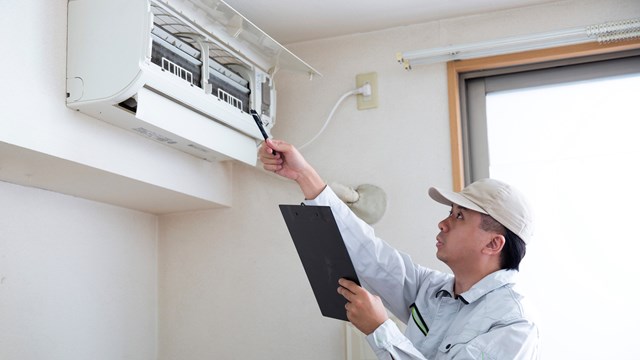
A cold, wet spring turned quickly into a hot, humid summer rife with thunderstorms and localized flooding throughout the northeast. As autumn starts to paint the region’s foliage, community association boards and managers are looking at long-range forecasts and, in their annual ritual, wondering what winter will hold this year.
Will conditions be just right for those nasty ice dams that wreak havoc on roofs and unit ceilings? Will a long, deep freeze put stress on heating systems and lead to burst pipes? Will mountains of snow and thaw-freeze cycles create slip-and-fall hazards throughout neighborhoods?
Whatever Mother Nature is getting ready to throw at New England during the upcoming season, the time has come for associations to pull out their winterizing checklists and get busy on buttoning up their properties.
With winter on the way, we asked experienced community association professionals what items on are on their “to-do” lists—and should be on your community’s list, too.
Winter tends to sneak up quickly, and it’s all too easy to get caught by surprise by an early cold snap or snowstorm. With that in mind, David Barrett, CPM, PCAM, director of operations at Crowninshield Management in Peabody, Massachusetts, says that September is the time to address a number of key outdoor topics.
“Make sure that outside water spigots are shut off and drained,” he suggests, to avoid burst pipes when temperatures drop. “Irrigation systems for grass and flower beds should be drained by Columbus Day.” Mid-October is also a good target date for having snow removal contracts in hand. “We like to have the same contractor for snow plowing and landscaping,” Barrett says, “so that if the plows do any damage, the same person will be responsible for fixing it in the spring.”
And although residents might wish that warm weather—and those lazy, hazy days of lounging by the pool—would last forever, New Englanders know that’s just a dream. “After Labor Day, it’s time to shut the pool down,” Barrett says.
Landscape Maintenance
Bart Poulin, co-owner of Greener Horizon, a landscape management and construction firm in Middleboro, Massachusetts, adds that exterior backflows and other expensive irrigation components should be stored inside for the winter to avoid damage. “If you don’t properly store them, they can break and cost hundreds of dollars to replace.”
In addition to blowing out the water and shutting down irrigation systems, it’s a good idea in fall to winterize the property’s plants, Poulin adds. “We do some hand-pruning of shrubs; it can help out if we get a lot of snow.” Plants can also use a late application of slow-release fertilizer, so they can get off to a good start when they come out of dormancy in the spring, he says.
And before freezing temperatures hit, evergreens—especially broadleaf plants like rhododendrons, mountain laurel and PJMs—should be sprayed with an anti-desiccant to prevent winter burn and long-term damage.
Landscape plants like arborvitae, which are susceptible to damage from deer or heavy snow loads, can be wrapped with burlap. While not terribly attractive, the wrap will both keep the branch structure from splitting, and prevent hungry animals—especially when a deep snow comes early in the season—from eyeing the plantings as a salad bar.
And across New England, the autumn months that precede winter’s cold blasts create their own danger to association properties. As tons of leaves flitter and flutter from the branches of deciduous trees, many will land on rooftops and, inevitably, in drains and gutters. Roof drains, notes Mike McDuffee of Corolla Roofing in Winthrop, Massachusetts, can get clogged with leaves and pine needles, preventing them from doing their job.
“It’s amazing,” he says. “The pine needles bond to each other and become a solid mass. You can have two to three inches of water held back on the roof because of pine needles and leaves.” So in the fall, he advises, it’s essential to be sure that the drains on flat roofs, and the gutters and downspouts on shingle roofs, are cleared.
Up on the Roof
The roof, in general, should be checked before storm season arrives. “Some of our accounts ask us to do a yearly maintenance visit,” McDuffee says. The company looks over the roof for signs of damage from storms or from other contractors. “There might have been air conditioning or cable people up there doing their thing. I’ve seen microwave discs screwed into the roof, and the managers might not know it was done.
“It’s not unusual; people don’t know what goes on up on the roof,” he says. Having a roofing expert walk the surface in the fall can avoid a lot of problems in the dead of winter. “Not only is fall a good time because the leaves have already fallen from the trees, but if there are problems, it’s much harder in winter to do the repairs because you have to clear the ice and snow. And repairs are less likely to be successful in the winter.” A fall roof inspection “is time well spent, and it’s money saved,” he adds.
And having a relatively new roof isn’t a guarantee against problems. “Whether it’s a new roof or an old roof, it’s out of sight, out of mind,” McDuffee says. A building may not be experiencing leaks, but that doesn’t mean that problems don’t exist. A hole here, a rip there, and all kinds of havoc may be happening below, sight unseen. Water could be wetting down insulation, getting into wall cavities, causing rust and moisture problems inside the walls. “An expert will see these things, because that’s what we do. With any building that has a flat roof, we definitely encourage a walk-around,” he says.
Unfortunately, he notes, only 10 to 20 percent of associations bother with that crucial review.
And whether on the roof or on the ground, snow accumulation is just about a sure thing in any New England winter. The only question is whether enough snow will land at any given time to create major headaches for properties.
Remember a few years ago, when the snow just kept coming, and buildings were literally collapsing under the weight of the white stuff? Property managers who tried to find professionals to clear snow off over-burdened roofs in the midst of that season were generally out of luck. “When that situation occurs, everyone is booked up, and if you bring in guys who don’t know what they’re doing, they can damage the roof,” McDuffee cautions. He encourages associations to make arrangements in the fall with a roofing contractor—not for shoveling every snowstorm, “but, ‘can I call you if these conditions occur?’”
It’s important, he stresses, that any worker going up onto the roof has proper insurance, to protect the association.
Ground-level snow removal also requires advance planning. “Snow contracts should always be set up for November 1,” Barrett says. Sand and salt contracts need to lined up in early fall, too. Once winter storms hit, those commodities can be difficult to find. “If you provide sand buckets and salt buckets throughout the property and in vestibules, you want to get those in place before November 1,” Barrett says.
“And if you have guys who do snow removal, get the plows and sanders on the trucks, and the tools and shovels ready,” he advises. “Make sure you have the manpower, a pool of people you can call in to help if there’s a big storm.”
Don’t Forget the Inside
While outdoor checklists may dominate winter-preparation thoughts, the changing seasons bring indoor tasks to the fore as well.
“The heat has to be on by September 15th in Massachusetts,” Barrett reminds associations. Buildings that shut the heat down for the summer need to get those systems ready to roll for the fall. “Some people do it in the summer, but I would do the preventive maintenance right before you turn the system back on, before you’re going to start using it again,” Barrett says. “Your heating contract will usually do that.”
Buildings with air conditioning units or systems need attention, too. “Some of our properties have wall AC units, and they’ll just put covers on those. Some have heat pumps; some have main chillers; others have sleeved-in units,” Barrett says. But whatever system exists, early fall is the time to winterize them, and admit that there will be enough cold air coming—thanks to Mother Nature—in the months ahead.
Pat Gale is associate editor of New England Condominium.






Leave a Comment